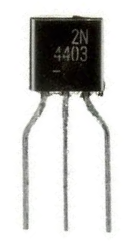Base Region of a Bipolar Junction Transistor (BJT)

A bipolar junction transistor has 3 regions: the base, the collector, and the emitter.
This is illustrated below:

The base region is the region where a sufficient input current triggers a much larger current from the emitter to the collector of the transistor.
Role of Base Region of a BJT Transistor
The role of the base region is to function as the trigger for a larger emitter-to-collector current.
When the base current receives sufficient current, a larger current then flows from the emitter to the collector.
In a bipolar junction transistor, current flows from the emitter to the collector and then out from the collector.
The base region of a BJT transistor is very thin and is lightly doped with current carriers. It is the region of a transistor which has opposite polarity charge carriers from the emitter and the collector regions.
When the base of the transistor receives sufficient current, the charge carriers from the emitter are attracted to the holes in the base region. This creates an avalanche effect in which the current continues on to the collector region, which the large current outputs through.
Mosof the current carriers injected into the base region cross over into the collector side and do not
flow out of the base lead.
